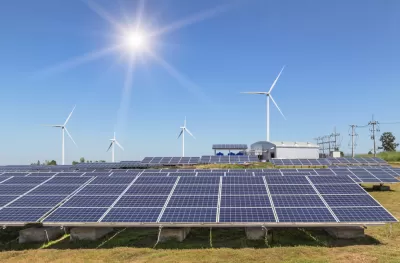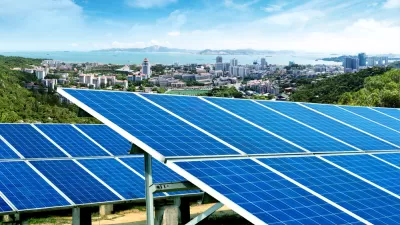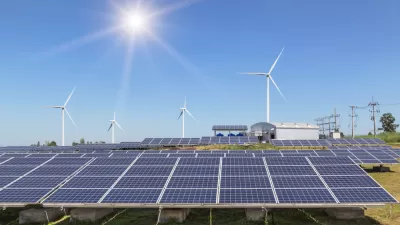To reach goals in reducing emissions, Gates's group is looking to invest in technology that can provide energy in efficient ways by supplying clean power when the sun isn't shining and the wind isn't blowing.

Bill Gates’s clean energy investment group, Breakthrough Energy Ventures (BEV), founded with support from other billionaires like Richard Branson and Jack Ma, is targeting energy storage. This socially mind group sees energy storage as a source of innovation that could bring clean energy to more people around the world. "Energy storage can overcome the biggest limitation of modern renewable power: Solar panels and wind turbines can only generate energy when the sun is out or the wind is blowing," Akshat Rathi reports for Quartz.
These companies intend to move beyond even the recent innovations in lithium batteries."…the first two startups that BEV will be investing in: Form Energy and Quidnet Energy. Both companies are developing new technologies to store energy, but taking completely different approaches to achieve that goal," Rathi reports.
Form Energy is investigating ways to improve batteries so they run for longer periods of time more cost effectively. "Experts predict that lithium-ion battery costs will bottom out at about $100/kWh. The solution to store energy for weeks and months at a time then would be to develop batteries that can cost less than $10/kWh," Rathi reports. Form says they have two candidates to try to move beyond lithium batteries. "One of the candidate chemistries, Chiang confirmed, is a “sulfur-flow battery,” which he wrote about in some detail in the journal, Joule, in October 2017."
Quidnet, meanwhile, is looking at ways to store energy in water that moves turbines, an old practice with a new twist. "… but without the need for rivers or dams. Instead, it uses excess electricity to pump water into the underground shale rock found in new wells dug for the purpose or in abandoned oil-and-gas wells," Rathi writes.
FULL STORY: To hit climate goals, Bill Gates and his billionaire friends are betting on energy storage

Planetizen Federal Action Tracker
A weekly monitor of how Trump’s orders and actions are impacting planners and planning in America.

Restaurant Patios Were a Pandemic Win — Why Were They so Hard to Keep?
Social distancing requirements and changes in travel patterns prompted cities to pilot new uses for street and sidewalk space. Then it got complicated.

Map: Where Senate Republicans Want to Sell Your Public Lands
For public land advocates, the Senate Republicans’ proposal to sell millions of acres of public land in the West is “the biggest fight of their careers.”

Maui's Vacation Rental Debate Turns Ugly
Verbal attacks, misinformation campaigns and fistfights plague a high-stakes debate to convert thousands of vacation rentals into long-term housing.

San Francisco Suspends Traffic Calming Amidst Record Deaths
Citing “a challenging fiscal landscape,” the city will cease the program on the heels of 42 traffic deaths, including 24 pedestrians.

California Homeless Arrests, Citations Spike After Ruling
An investigation reveals that anti-homeless actions increased up to 500% after Grants Pass v. Johnson — even in cities claiming no policy change.
Urban Design for Planners 1: Software Tools
This six-course series explores essential urban design concepts using open source software and equips planners with the tools they need to participate fully in the urban design process.
Planning for Universal Design
Learn the tools for implementing Universal Design in planning regulations.
Heyer Gruel & Associates PA
JM Goldson LLC
Custer County Colorado
City of Camden Redevelopment Agency
City of Astoria
Transportation Research & Education Center (TREC) at Portland State University
Camden Redevelopment Agency
City of Claremont
Municipality of Princeton (NJ)




























